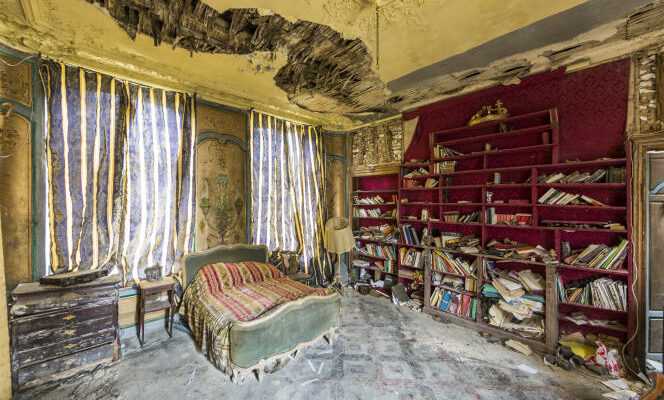THE MORNING LIST
To explore a forgotten castle or an abandoned factory, without permission, is to enter both unknown and possibly dangerous territory, and a bygone past, of which only the dilapidated walls remain. The most seasoned “urbexers” maximize their sensations by posting their images on social networks. Here are five books about urbex.
Old prison and ghost towns
This “photographer and adventurer” prefers to hide behind his pseudonym. Jonk, therefore, roams the planet in search of fallow buildings that he explores without authorization.
Among the thirty-five rigorously selected places, some have known several successive histories, such as this former prison which was first an abbey, in Loos (North), or this Italian religious hospice converted into a military college and then into a psychiatric hospital. Military cities, ghost towns, abandoned amusement parks or car cemeteries hold no secrets for him.
In the beautiful texts that accompany striking images, the author tells in the first person his emotions, “the plop-plop of the drops hitting the ground”the smell of ashes, the fear of meeting looters or guards and their dog, the stopped clocks which continue to tell the time of a bygone past.
nature’s revenge
The urbex consists in exploring a world without humans, built from scratch, but neglected, then forgotten by its creators. “History has taught us that nature always finds a way to regain the upper hand”writes, in the preamble, the photographer Romain Veillon.
This apocalyptic bias guides his gaze, from the dusty paneling and parquet floors of an Aquitaine palace or a Jura castle to the gloomy staircases of an Irish manor, passing through the cracked ceilings of a Ligurian villa and this “hall of the hanged in a mine in the Rhineland, where miners stored their clothes in metal baskets hung from the ceiling.
As you turn the pages, nature takes its revenge. Ferns and brambles, ivy and mold invade a mansion or an abandoned water park. In a Tuscan villa, here, lying on the ground, is a human form. It’s a mannequin, ultimate relief of our presence.
The last session
Movie theaters were once popular meeting places in the United States, especially in small towns in the Midwest. Today, while everyone can watch a film on their smartphone, cities have devitalized and large screens no longer interest many people. There remain the colorful and ornate facades of these movie theatersbuilt like small theatres.
You have 50.71% of this article left to read. The following is for subscribers only.
